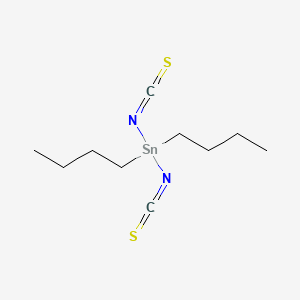 See more Tin products. Tin (atomic symbol: Sn, atomic number: 50) is a Block P, Group 14, Period 5 element with an atomic weight of 118.710. The number of electrons in each of tin's shells is 2, 8, 18, 18, 4 and its electron configuration is [Kr] 4d10 5s2 5p2. The tin atom has a radius of 140.5 pm and a Van der Waals radius of 217 pm.In its elemental form, tin has a silvery-gray metallic appearance. It is malleable, ductile and highly crystalline.
See more Tin products. Tin (atomic symbol: Sn, atomic number: 50) is a Block P, Group 14, Period 5 element with an atomic weight of 118.710. The number of electrons in each of tin's shells is 2, 8, 18, 18, 4 and its electron configuration is [Kr] 4d10 5s2 5p2. The tin atom has a radius of 140.5 pm and a Van der Waals radius of 217 pm.In its elemental form, tin has a silvery-gray metallic appearance. It is malleable, ductile and highly crystalline.  Tin has nine stable isotopes and 18 unstable isotopes. Under 3.72 degrees Kelvin, Tin becomes a superconductor. Applications for tin include soldering, plating, and such alloys as pewter. The first uses of tin can be dated to the Bronze Age around 3000 BC in which tin and copper were combined to make the alloy bronze. The origin of the word tin comes from the Latin word Stannum which translates to the Anglo-Saxon word tin. For more information on tin, including properties, safety data, research, and American Elements' catalog of tin products, visit the Tin element page.
Tin has nine stable isotopes and 18 unstable isotopes. Under 3.72 degrees Kelvin, Tin becomes a superconductor. Applications for tin include soldering, plating, and such alloys as pewter. The first uses of tin can be dated to the Bronze Age around 3000 BC in which tin and copper were combined to make the alloy bronze. The origin of the word tin comes from the Latin word Stannum which translates to the Anglo-Saxon word tin. For more information on tin, including properties, safety data, research, and American Elements' catalog of tin products, visit the Tin element page.
Materials
Materials by Form
2D Materials Alloy & Alloy Forms Pure Metals & Metal FormsCeramic FibersFoams: Metallic & Ceramic High Purity Materials Isotopes MXenesOxides Rare Earths Semiconductors Solutions
Chemicals & Salts
All Chemicals & Salts Acetates Aluminides Ammonium Sulfates Antimonides Arsenates Benzoate Bromates Bromides Carbonates Chlorides Chromates Fluorides Hydrides Hydroxides Iodates Iodides Lactates Molybdates Nitrates Oxalates Oxides Perchlorates Phosphates Selenates Selenides Selenites Silicates Stearates Sulfates Sulfides Sulfites Tantalates Tellurates Tellurides Tellurites ThiocyanatesVanadates
Ceramics
Nanomaterials
Organometallics
Materials by Application
Additive Manufacturing & 3D Printing Battery & Supercapacitor Materials Catalysts Dental Materials Electronics Materials Fuel Cell Materials Fusion EnergyGlass Manufacturing Green Technology & Alternative Energy Hydrogen Storage Laser Crystals Life Sciences & Biomaterials Metallurgy Nanotechnology & Nanomaterials Optical Materials Photovoltaic & Solar Energy Plating Pigments & Coatings Research & Development Space Technology Sputtering Targets Thin Film Deposition Water Treatment Weather Modification
Life Science Chemicals
Life Science Products AlcoholsAldehydesAmidesAminesAmino Acids & DerivativesAromaticsArylsAzetidinesBenzimidazolesBenzisoxazolesBenzodioxansBenzofuransBenzothiazolesBenzothiophenesBenzoxazolesCarboxylic AcidsEnzymes & InhibitorsEstersEthersFluorinated Building BlocksFuransHalidesImidazolesImidazolidinesIndazolesIndolesIndolinesIsoquinolinesIsoxazolesKetonesMorpholinesNaphthyridinesNitrilesOrganoboronOrganosiliconOxadiazolesOxazolesPharmaceuticals & IntermediatesPhenolsPhytochemicalsPiperazinesPiperidinesPyrazinesPyrazolesPyridazinesPyridinesPyrimidinesPyrrolesPyrrolidinesPyrrolinesQuinazolinesQuinolinesQuinoxalinesSpiroesSulfonyl ChloridesTetrahydroisoquinolinesTetrahydropyransTetrahydroquinolinesTetrazolesThiadiazolesThiazolesThiazolidinesThiolsThiophenesTriazinesTriazoles
About Us
Locations
Austria Belgium Brazil Canada China & Hong Kong Czech Republic Denmark Finland France Germany Greece Hungary India Indonesia Israel Italy Japan Malaysia Mexico Netherlands Norway Philippines Poland Portugal Russia Singapore South Korea Spain Sweden Switzerland Taiwan Thailand Turkey United Kingdom United States
Industries
Aerospace Agriculture Automotive Chemical Manufacturing Defense Dentistry Electronics Energy Storage & Batteries Fine Art Materials Fuel CellsFusion Energy Glass Investment Grade Metals Jewelry & Fashion Lasers Lighting Medical Devices Museums & Galleries Nuclear Energy Oil & Gas Optics Paper & Pulp Pharmaceuticals & Cosmetics Research & Laboratory Robotics Solar Energy Space Sports Equipment Steel & Alloy Producers Textiles & Fabrics Water Treatment Municipalities
Follow Us

